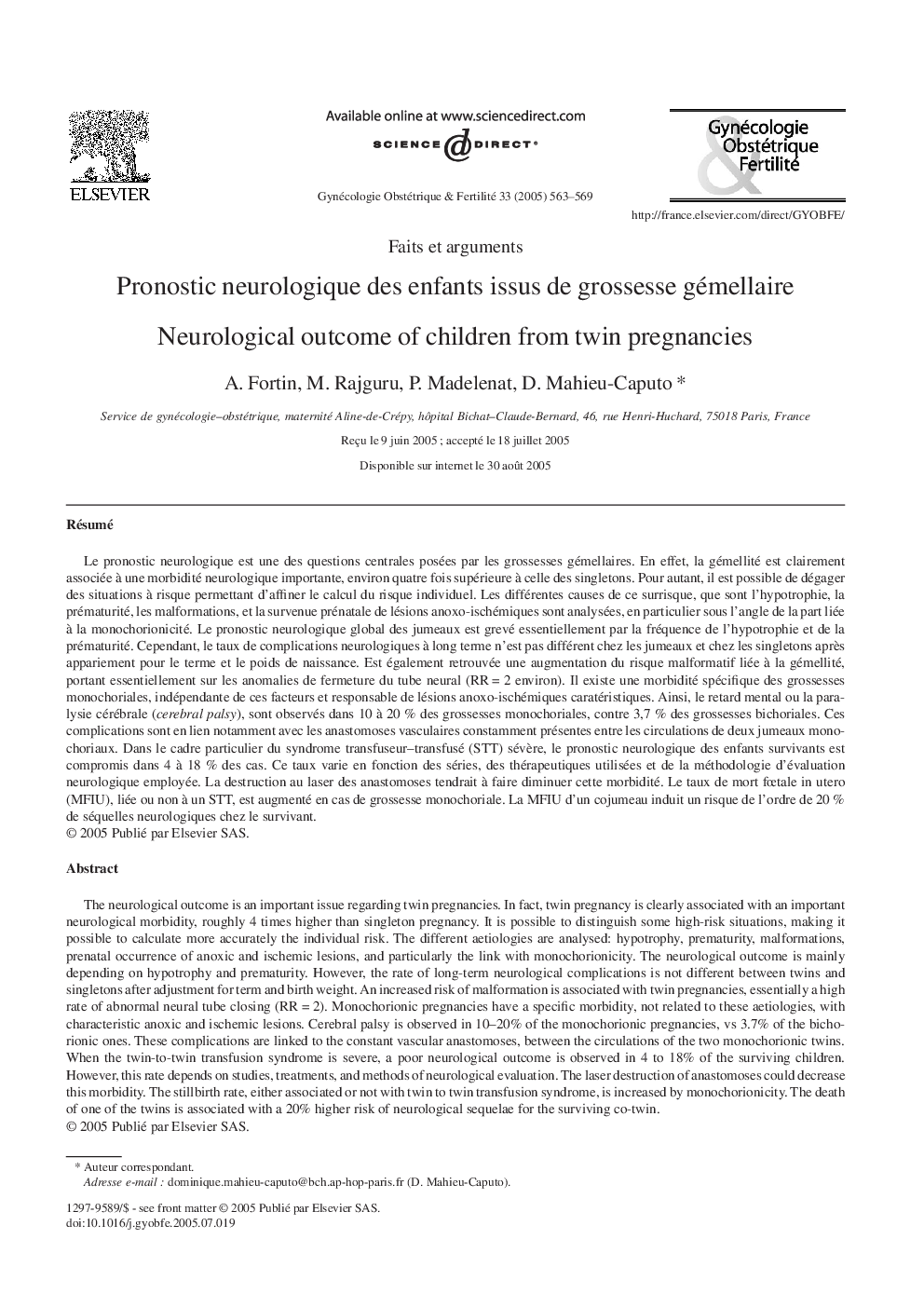| Article ID | Journal | Published Year | Pages | File Type |
|---|---|---|---|---|
| 9329311 | Gynécologie Obstétrique & Fertilité | 2005 | 7 Pages |
Abstract
The neurological outcome is an important issue regarding twin pregnancies. In fact, twin pregnancy is clearly associated with an important neurological morbidity, roughly 4 times higher than singleton pregnancy. It is possible to distinguish some high-risk situations, making it possible to calculate more accurately the individual risk. The different aetiologies are analysed: hypotrophy, prematurity, malformations, prenatal occurrence of anoxic and ischemic lesions, and particularly the link with monochorionicity. The neurological outcome is mainly depending on hypotrophy and prematurity. However, the rate of long-term neurological complications is not different between twins and singletons after adjustment for term and birth weight. An increased risk of malformation is associated with twin pregnancies, essentially a high rate of abnormal neural tube closing (RRÂ =Â 2). Monochorionic pregnancies have a specific morbidity, not related to these aetiologies, with characteristic anoxic and ischemic lesions. Cerebral palsy is observed in 10-20% of the monochorionic pregnancies, vs 3.7% of the bichorionic ones. These complications are linked to the constant vascular anastomoses, between the circulations of the two monochorionic twins. When the twin-to-twin transfusion syndrome is severe, a poor neurological outcome is observed in 4 to 18% of the surviving children. However, this rate depends on studies, treatments, and methods of neurological evaluation. The laser destruction of anastomoses could decrease this morbidity. The stillbirth rate, either associated or not with twin to twin transfusion syndrome, is increased by monochorionicity. The death of one of the twins is associated with a 20% higher risk of neurological sequelae for the surviving co-twin.
Keywords
Related Topics
Health Sciences
Medicine and Dentistry
Obstetrics, Gynecology and Women's Health
Authors
A. Fortin, M. Rajguru, P. Madelenat, D. Mahieu-Caputo,
